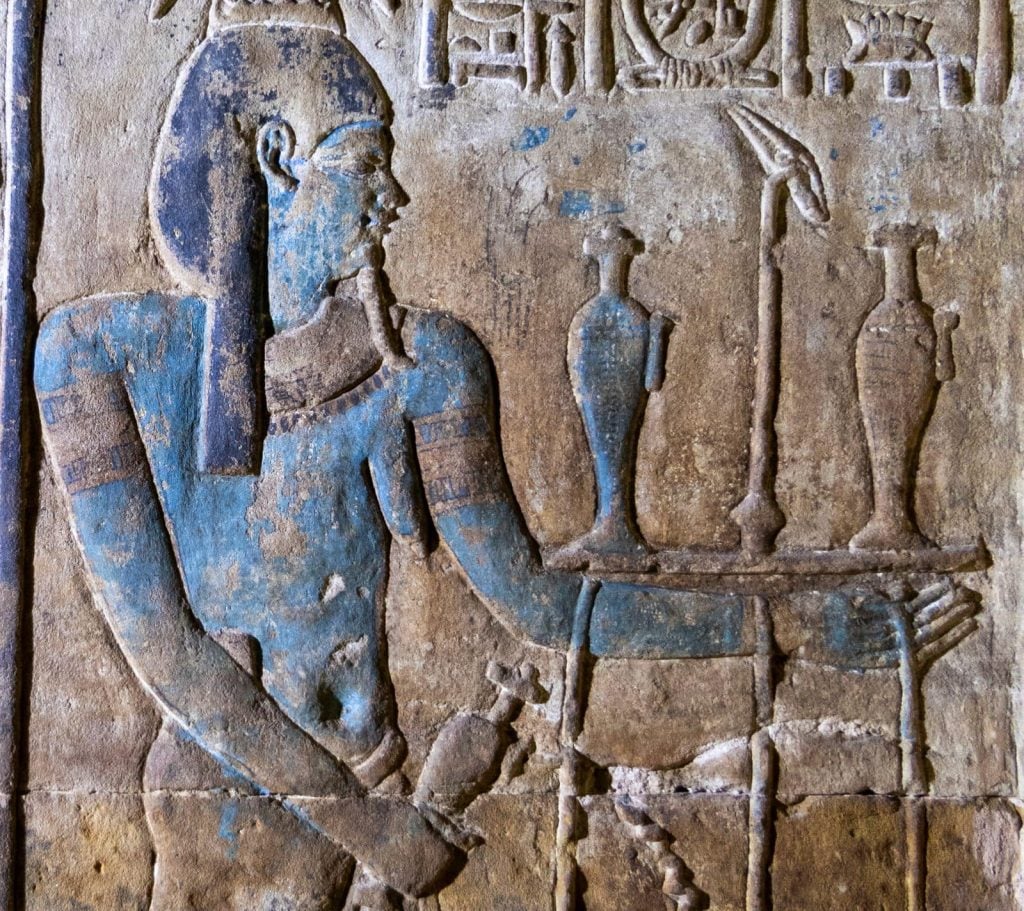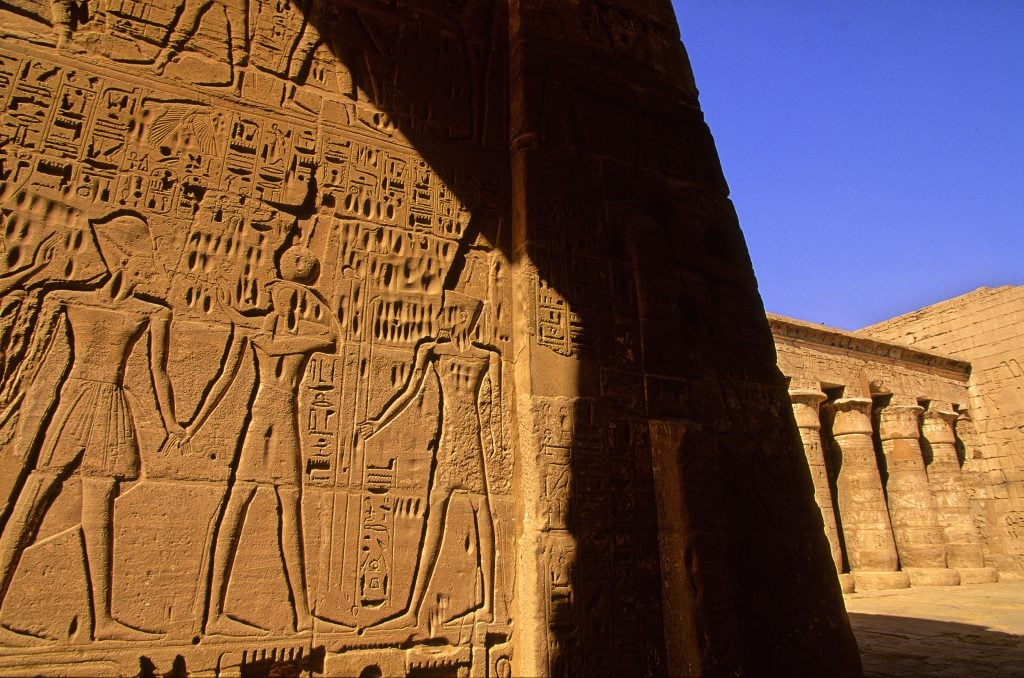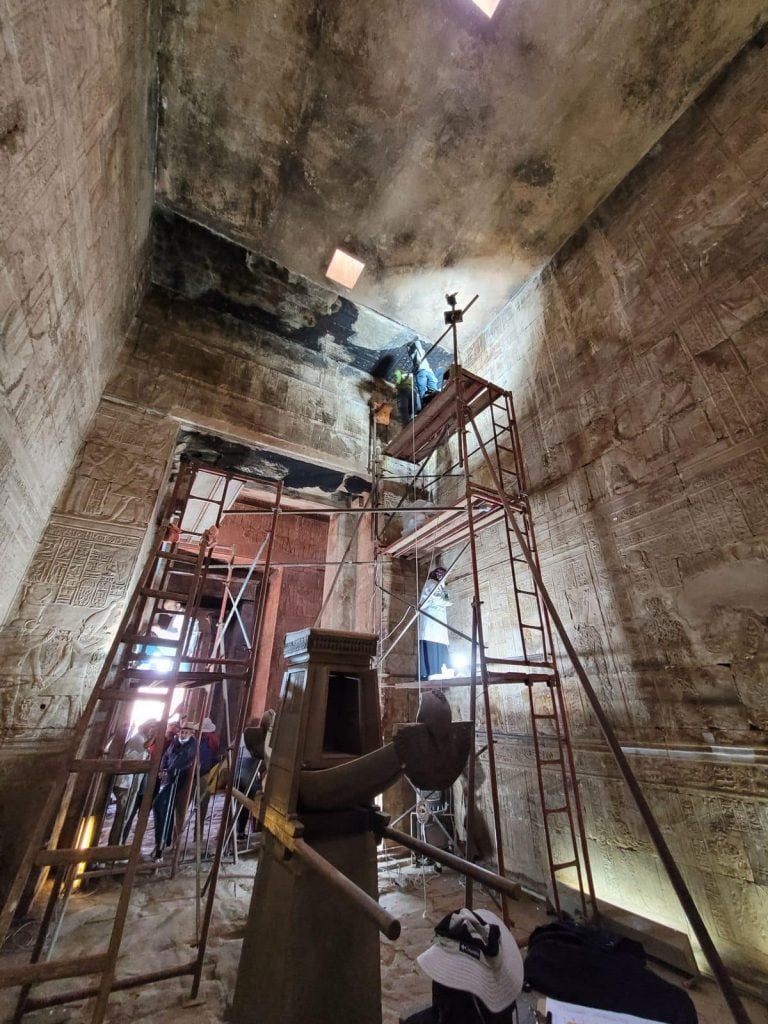Archaeology & History
Experts Restore the Lost Colors of an Ancient Egyptian Temple
The reliefs on the Temple of Edfu were once colorful.

Egyptian and German experts have successfully restored the lost colors and glimmering metals that once enlivened ancient Egypt’s second largest, and perhaps best preserved, temple. Since 2021, Egypt’s Ministry of Tourism and Antiquities has worked alongside Germany’s University of Würzburg to clean and preserve the Temple of Edfu, which is devoted to the falcon god Horus and situated along the Nile’s west bank, just below the river’s midway point.

An expert conducting restorations. Courtesy of Egypt’s Ministry of Tourism and Antiquities.
This week, ahead of the country’s winter tourism rush, the ministry announced the endeavor’s first triumphs in reviving the original red and blue hues that graced the temple’s thoroughly ornamented walls for thousands of years. These colors, which ancient craftsmen sometimes added atop their carvings to correct them, also clarify elements of the extensive inscriptions’ scenes, such as their clothing and offerings. Thus, this restoration is further elucidating the nature of ancient Egypt’s Ptolemaic beliefs, which merged the area’s preexisting culture with encroaching Hellenic influences.
Construction on the Temple of Edfu began under King Ptolemy III Ergetes (who served from 246 to 222 B.C.E., at the height of the Ptolemaic dynasty), then concluded around 57 B.C.E., amid the two-part reign of King Ptolemy XII Auletes, one of the last Ptolemaic rulers. The temple’s ruin began when the Roman Emperor Theodosius I banned non-Christian worship, in 391 C.E.. Today, it is a trove of insight into the era’s language, mythology, and religious rites.

The Temple of Edfu in Egypt. Photo: Frédéric Soltan/Corbis via Getty Images.
To restore the monumental site, which measures nearly 450 feet long, 250 feet wide, and up to 115 feet tall, researchers carefully removed the centuries’ worth of dirt, bird droppings, soot, and salt deposits obscuring its polychromy. As supervisor Ahmed Abdel Nabi explained, the colors they found “are currently being examined, analyzed, and restored.” Although new pigments are being applied as part of that restoration, they will remain true to the temple’s original appearance.
Dr. Ayman Ashmawy, head of the Egyptian Antiquities sector, added that the team has found text in the temple indicating that “some of the buildings in it were covered with layers of thick metal foil made of [gilded] copper.” Small holes in the temple walls, along with fragile golden flecks high above its storied shrine to the Sacred Barque of Horus, offer the only evidence of this ornamentation.

The restoration in action. Courtesy of Egypt’s Ministry of Tourism and Antiquities.
Meanwhile, in the Holy of Holies chamber, researchers have uncovered demotic script, a simplified version of ancient Egyptian cursive. These ink writings offer direct testimony and prayers to Horus from the temple’s priests—a striking find, given that such accounts typically appear throughout temples’ outer perimeters, or around their entryways. Traces of gold gilding appeared inside the Temple of Edfu, too, deifying its reliefs of royal jewelry, insignias, and, of course, the gods—especially when the sunlight hit them.
In an effort to continue learning more about the Temple of Edfu, as well as the wider culture of Ptolemaic ancient Egypt, the team will continue cleaning its walls and eventually publish its texts and scenes digitally, to create a more accurate resource than those amassed over the past century.





